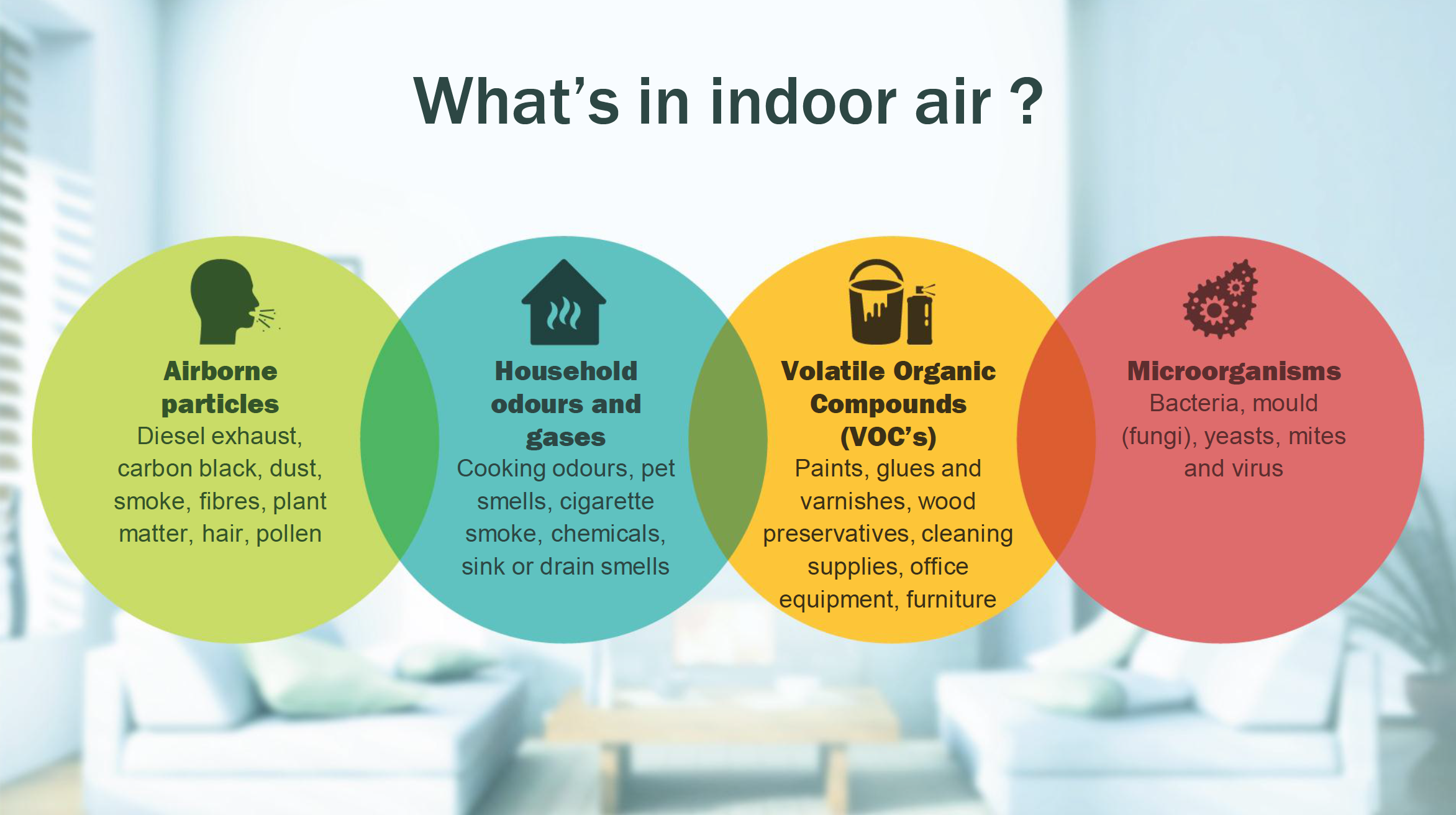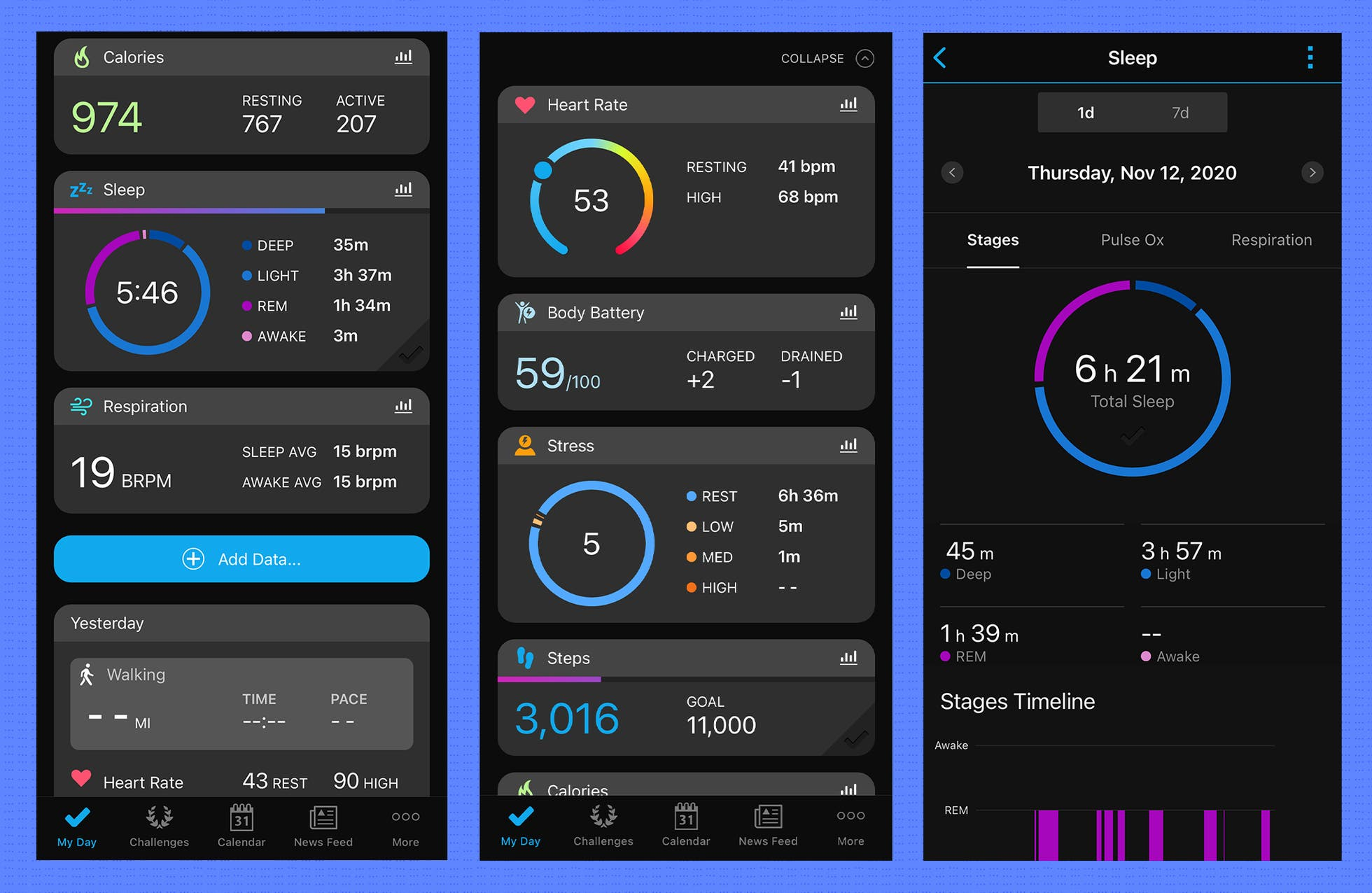
Indoor Air Quality: How It Impacts Your Health Today
Indoor air quality plays a crucial role in determining our overall health and well-being, particularly as we spend approximately 80% of our time indoors in environments such as homes, offices, and schools. Poor air quality can lead to various indoor pollution effects, impacting not only physical health but also cognitive function and air quality. In “Healthy Buildings: How Indoor Spaces Can Make You Sick — or Keep You Well,” experts Joseph Allen and John Macomber highlight the significant air quality impact on health and how even a small change in ventilation can enhance productivity. As daily occupants begin to understand the importance of maintaining a healthy workspace, improving office air quality becomes a priority to foster better mental clarity and focus. By addressing these issues, we can create healthier buildings that support our daily lifestyles and promote overall wellness.
The quality of the air we breathe indoors is an often overlooked aspect of our living and working environments. With so much of our lives spent within private and professional spaces, understanding indoor atmospheric conditions is essential for fostering a healthful atmosphere. Contaminants and pollutants present in these spaces can adversely affect everything from our physical comfort to crucial cognitive functions. Embracing the concept of healthy buildings involves recognizing the importance of clean, well-ventilated air and the measures required to minimize harmful indoor pollution. By prioritizing air quality, we pave the way for environments that enhance our health while boosting productivity.
The Importance of Indoor Air Quality
Indoor air quality (IAQ) is a crucial factor that affects our overall health and well-being. According to research, the average person spends about 80% of their life indoors, making it imperative to ensure that the air we breathe is clean and safe. Poor IAQ can be a silent threat, causing a range of health issues that can affect everything from cognitive function to respiratory health. When indoor spaces are poorly ventilated or contaminated by pollutants, occupants can experience symptoms such as fatigue, headaches, and difficulty concentrating. These issues not only affect individual health but also impact workplace productivity and quality of life.
Understanding the sources of indoor air pollution—such as volatile organic compounds (VOCs) released from paints and furnishings, dust mites, mold, and pet dander—is essential for creating healthy indoor environments. Moreover, the effects of indoor pollution can extend beyond immediate discomfort and may lead to long-term health complications, including respiratory diseases and compromised immunity. By prioritizing IAQ in building design and maintenance, we can foster healthier living and working spaces that enhance both physical health and mental acuity.
Cognitive Function and Air Quality
Research has shown that cognitive function is closely linked to the quality of the air we breathe indoors. A study conducted by Harvard researchers found that increased air ventilation in office spaces led to improved cognitive performance among workers. Specifically, participants in environments with higher ventilation rates performed better in tasks that required complex decision-making and problem-solving skills, illustrating a tangible connection between clean air and enhanced productivity. This relationship highlights the importance of prioritizing air quality in workplaces as a way to boost employee efficiency and well-being.
Furthermore, the detrimental effects of poor IAQ can hinder cognitive functions such as memory retention and concentration levels. For instance, office air pollution can lead to what is often referred to as ‘sick building syndrome,’ where occupants report health and comfort issues that are linked to time spent in certain buildings. Improving IAQ through better ventilation systems and air purification technologies can mitigate these risks, allowing individuals to work more effectively and maintain higher levels of focus throughout their day.
Effects of Indoor Pollution on Health
Indoor pollution can significantly impact health outcomes for individuals of all ages, particularly in places like homes and offices where we spend most of our time. Common sources of indoor pollution, such as household cleaners, building materials, and even indoor plants, can release harmful substances into the air, leading to health issues such as asthma, allergies, and other respiratory conditions. Awareness of these pollutants is crucial, as many people may not realize that everyday items can compromise their health and comfort.
Moreover, vulnerable populations, such as children and the elderly, are particularly at risk due to their developing bodies and immune systems. Studies suggest that reducing indoor air pollutants can lead to measurable improvements in health outcomes, especially in areas with high levels of allergenic substances and toxins. Practicing good housekeeping and proper ventilation can help minimize exposure to these harmful agents, fostering a healthier environment for everyone.
Designing Healthy Buildings
The design and construction of buildings play a pivotal role in determining indoor air quality and occupant health. Incorporating features such as advanced ventilation systems, low-VOC materials, and enhanced natural light can dramatically improve indoor environments. Architects and builders are increasingly focusing on sustainable design concepts that prioritize the health of occupants while achieving energy efficiency. This shift towards ‘healthy buildings’ aims not only to protect human health but also to enhance the comfort and productivity of those who inhabit these spaces.
Furthermore, the integration of biophilic design elements, such as indoor plants and access to nature, can create a soothing atmosphere that positively impacts mental health. Evidence suggests that exposure to natural elements can reduce stress and promote relaxation, which is particularly beneficial in high-pressure environments like offices. By constructing buildings with thoughtful design principles that address both air quality and psychological well-being, we can create spaces that foster both health and happiness.
Office Air Quality and Employee Productivity
Office air quality has a direct correlation with employee productivity and well-being. In an era where remote work is becoming more prevalent, the focus on creating conducive workplaces has never been more important. Studies indicate that workers in offices with high air quality report higher levels of satisfaction and productivity compared to those in spaces with insufficient ventilation and excessive pollutants. As such, organizations are increasingly investing in air quality improvement initiatives to enhance the work experience for their employees.
Improving office air quality not only helps minimize health issues among employees but also leads to lower absenteeism rates and higher retention levels. By fostering an environment where workers can thrive, businesses can achieve better performance outcomes and create a culture that values the health and well-being of its workforce. Implementing regular air quality assessments and upgrades is an essential step in this process, demonstrating that attention to IAQ is an investment in the organization’s most valuable asset—its people.
Understanding Indoor Air Pollution Sources
Educating occupants about the sources of indoor air pollution is vital for promoting a health-conscious culture within buildings. Common sources like tobacco smoke, cleaning agents, and building materials can release harmful pollutants that accumulate in indoor air. Awareness campaigns can help inform employees and residents about the significance of maintaining clean indoor environments and encourage individuals to adopt practices that reduce pollution levels.
Moreover, identifying indoor pollution sources allows for targeted interventions to improve air quality. For example, organizations can replace traditional cleaning products with eco-friendly alternatives or invest in high-efficiency particulate air (HEPA) filtration systems to capture airborne contaminants. Regular maintenance and cleaning of HVAC systems also play a crucial role in preventing the build-up of indoor pollutants, ensuring that the air circulating within the building remains fresh and healthy.
Health Risks Associated with Poor Ventilation
Poor ventilation is often a significant contributor to indoor air quality problems and can lead to serious health risks. When indoor spaces lack proper airflow, pollutants can linger and concentrate, exposing occupants to harmful chemicals and irritants. This chronic exposure can result in respiratory issues, headaches, and allergy flare-ups, making it essential for building managers and homeowners to prioritize effective ventilation strategies. Regularly assessing and updating ventilation systems can help reduce these health risks and create more comfortable living and working conditions.
In the workplace, inadequate ventilation can impair cognitive performance, as employees struggle to concentrate in stuffy, poorly circulated air. A well-ventilated environment, on the other hand, not only improves comfort but fosters enhanced productivity and overall employee well-being. Simple actions, such as opening windows or installing air purifiers, can facilitate better airflow, ultimately reducing the adverse health effects associated with poor ventilation.
Mitigating Indoor Air Pollution
To combat indoor air pollution effectively, a combination of strategies is required. Implementing a robust housekeeping protocol can minimize dust, allergens, and other contaminants that may accumulate in indoor environments. Regular cleaning routines that include dusting, vacuuming, and using air purifiers can help maintain a healthier atmosphere, promoting better air quality for residents and workers.
In addition to housekeeping measures, introducing plants into indoor spaces can significantly improve air quality by naturally filtering out pollutants. Several studies suggest that certain plants, such as spider plants and peace lilies, possess the ability to absorb harmful chemicals, making them ideal for enhancing indoor environments. Combining these natural solutions with mechanical air cleaning systems can create an optimal indoor setting for health and productivity.
Legislation and Indoor Air Quality Standards
Legislative efforts to improve indoor air quality have gained traction in recent years, with regulations aimed at minimizing exposure to harmful pollutants in both residential and commercial spaces. By establishing comprehensive standards for IAQ, governments can encourage building owners and managers to adopt proactive measures that safeguard the health of occupants. Policies that prioritize indoor air quality can create a ripple effect, prompting sustainability initiatives that benefit not only public health but also the environment.
Moreover, as awareness of the impact of indoor air quality on health grows, a collective push for transparency in building operations is emerging. This includes mandating disclosure of air quality metrics and pollutant levels, enabling occupants to make informed decisions about the spaces they inhabit. By supporting legislation that promotes healthier indoor environments, we can take significant strides towards improving public health, productivity, and overall quality of life.
Frequently Asked Questions
How does indoor air quality impact health in workplaces?
Indoor air quality significantly affects health in workplaces by influencing cognitive function and overall well-being. Poor air quality can lead to increased fatigue, reduced concentration, and lower productivity. Ensuring adequate ventilation and minimizing indoor pollution effects can create healthier office environments.
What are the primary sources of indoor pollution effects in buildings?
Common sources of indoor pollution effects include volatile organic compounds (VOCs) emitted by furniture and cleaning products, moisture leading to mold growth, and inadequate ventilation. These pollutants can compromise air quality and negatively affect occupants’ health.
How can improving indoor air quality enhance cognitive function?
Research indicates that improving indoor air quality, particularly through enhanced ventilation and filtration systems, can boost cognitive function among workers. A study by Harvard showed that better air quality in office settings leads to higher performance levels in tasks requiring focus and decision-making.
What are effective ways to manage indoor air quality in healthy buildings?
Effective management of indoor air quality in healthy buildings involves regular air quality assessments, the use of air purification devices, ensuring proper ventilation, and maintaining humidity levels. Implementing these practices can mitigate the negative impacts of indoor pollution and promote occupants’ health.
What role does outdoor air play in indoor air quality?
Outdoor air has a significant role in determining indoor air quality. In many cases, pollutants from outdoor environments can infiltrate indoor spaces, affecting health. Proper ventilation systems are crucial to filter outdoor air and minimize indoor pollution effects on health.
How can businesses assess the air quality impact on health in their offices?
Businesses can assess the air quality impact on health through regular monitoring of indoor air pollutants, surveying employee health complaints, and utilizing air quality sensors. These measures can help identify issues and guide improvements to foster a healthier work environment.
Why is it important to consider cognitive function and air quality in office design?
Considering cognitive function and air quality in office design is essential because a well-designed workspace with optimal air quality can improve employee productivity, reduce sick days, and enhance overall satisfaction. Healthy buildings contribute to better performance and well-being.
What is the relationship between poor indoor air quality and employee sick leave?
Poor indoor air quality is linked to increased rates of employee sick leave. Indoor pollution effects, such as respiratory issues and fatigue, contribute to health problems, prompting workers to take time off. Maintaining healthy air quality can lower absenteeism and enhance employee health.
| Key Areas | Details |
|---|---|
| Indoor Air Quality Statistics | Americans spend about 80% of their lives indoors. |
| Cognitive Function Improvement | Increasing air ventilation can enhance workers’ cognitive function. |
| Historical Changes in Air Ventilation | The goal of ventilation changes since the 1970s was to limit complaints about body odors and improve health. |
| Indoor Air Pollution Sources | More outdoor air pollution is breathed indoors than outdoors. |
| Neighbor Air Influence | Up to 30% of the indoor air can come from nearby apartments. |
| Indoor Air Quality Improvement Opportunities | Identify more than 10 opportunities to enhance your building’s health standards. |
| Exhaled Air Contribution | Up to 3% or more of the air indoors may come from the lungs of others. |
| Reducing Infectious Diseases | To minimize spread, increase outdoor air, use air filters, and portable HEPA cleaners. |
| Dust Composition | Dust is hormonally active. |
| Chemical Regulation | Only 200 of the 80,000+ chemicals have been banned by the EPA since 1976. |
Summary
Indoor air quality plays a crucial role in our overall health and wellbeing. It is surprising to learn that we spend a significant amount of our lives indoors, potentially exposing ourselves to pollutants that can affect our cognitive function and overall health. Ensuring good indoor air quality through improved ventilation, air filtration, and awareness of chemical use is essential in making our living and working environments healthier.


